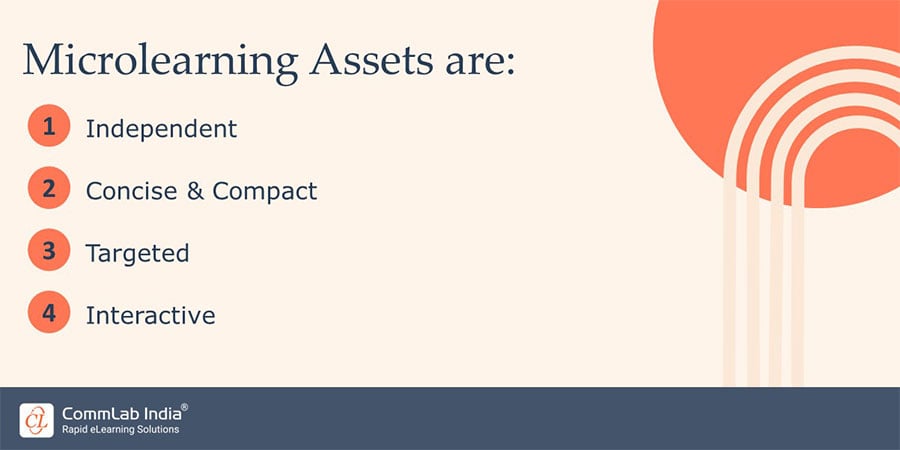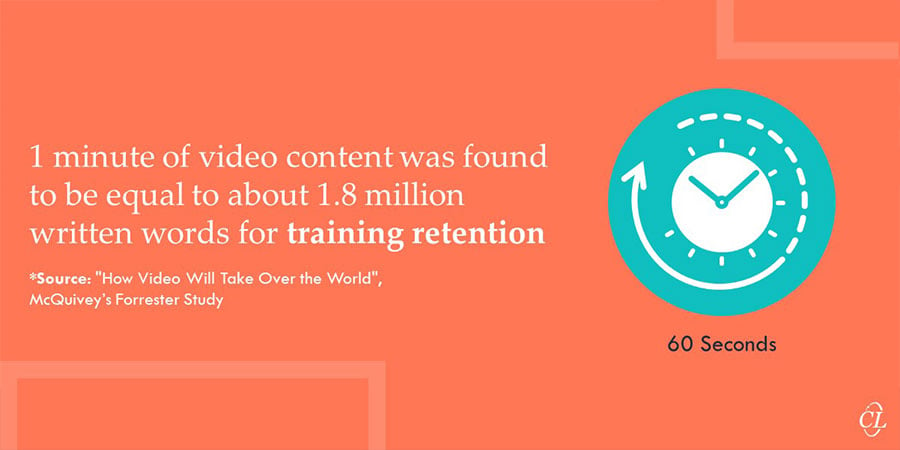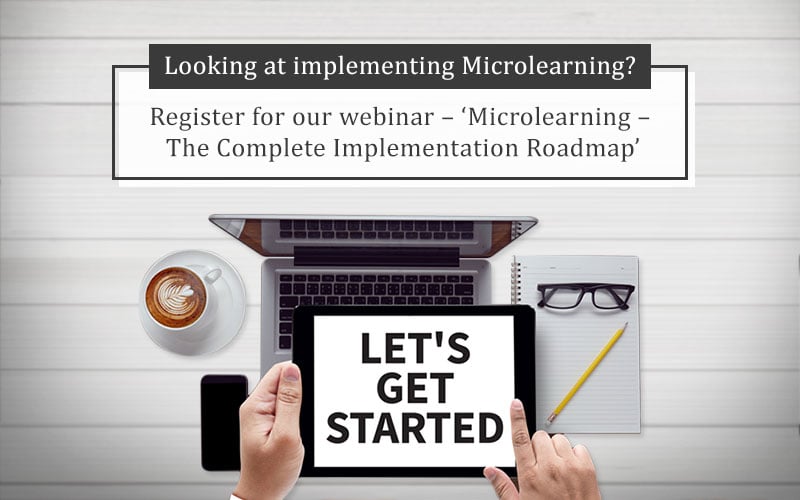3 Steps to a Successful Microlearning Implementation
Every microlearning implementation must face the wrath of time. Some achieve success while some slip through the cracks. So how to navigate the obstacles? Here’s how to jumpstart your Microlearning implementation with practical ideas to provide enhanced performance support.

Microlearning at a Glance
Microlearning is the practical representation of the phrase – “Small is Smart.” Microlearning is a clean format of learning delivery, where the focus of delivering a single learning point is modelled upon a single small chunk. Smart move, isn’t it?Ideas to Jumpstart your Microlearning Implementation
A 3-step process to develop a Microlearning Strategy that works: Step 1 – Clarify the Microlearning Basics Step 2 – Define the Need for Microlearning Step 3 – Sketch your Microlearning PlanDevelop a Microlearning Strategy that Works – 3 Steps
Step 1 – The Basics
To develop a microlearning strategy, first start with the basic characteristics of Microlearning. By getting a clear picture of the basics right at the start, you can chalk out the next steps with ease. What are the unique features that distinguish microlearning assets from any learning material? Short and Concise – Being short is one of the key attributes of a microlearning asset. But does that mean any short or small asset is microlearning? Absolutely not. A microlearning asset is also concise enough to hold the required information within the short size. For an infographic or PDF, the ideal size would be one that is readable on a single view of the screen. For a microlearning video, the ideal duration is between 2 minutes to 5 minutes. The goal of a microlearning asset is to be precise and specific, to cater to just-in-time learning and knowledge refreshers. Targets a Single Objective – The microlearning asset must be modelled around a single learning objective so as to stay precise. By designing the asset to target a single learning objective, the asset is naturally low on complexity and communicates information to the point. Content must be chunked, focused, visualized ad communicated in a single sitting. The asset should address the primary pain point that the learner is looking to solve and that’s all.→Download eBook – Where Does Microlearning Fit in Your Learning Strategy?
Standalone Element – The microlearning asset must function as an independent learning resource with all the required learning context within. Even if it is part of a curriculum, the asset must make sense on its own and convey the required information to support the learner without any mandates for pre-requisite knowledge. In simple terms, microlearning assets must be free of any dependencies on another asset or knowledge resource. Think of the microlearning asset as an independent block of LEGO®, where the block is fine on its own and contributes to the greater requirement when in need. Interactive – A microlearning asset must engage the learner in some sort of interaction to foster learning and knowledge retention. When learners are engaged to participate, they receive the knowledge actively which greatly enhances their knowledge recall factor. To make a microlearning asset interactive, the innovative authoring tools available today allow to embed different types of interactivities in a microlearning asset with ease.
Step 2 – The Need
Now that the basics have been reviewed, it is time to define the need for a microlearning program. Identify and evaluate the learning needs that need to be prioritized and where microlearning can be the best bet. Typically, the need for microlearning arises in the following scenarios:- When there is limited time to roll out learning
- To facilitate Just-in-Time learning & Refresher Trainings
- To reinforce learning periodically
- To enhance knowledge assimilation
- To repurpose existing content or learning module
- To update engagement and interactivities
Step 3 – The Plan
After defining the need, the next step is to outline the plan for your microlearning program. Planning a microlearning program is a crucial step in implementing the microlearning strategy that brings in results. To start planning, here are the questions you need answers for:- What is the learner profile?
- What is the microlearning program’s aim?
- What formats can be used to fulfil the purpose?

Microlearning Assets – The Shield
A majority of the workforce today opts for learning on the go. This puts emphasis on microlearning assets to be multi-device compatible. When chalking out a microlearning strategy, ensure you consider the need to cater to portable mobile devices along with primary forms of devices for optimum usage adoption. The latest learning technologies have indeed made it easy to design microlearning assets that work anytime, anywhere. Popular Microlearning asset formats are – Videos, Infographics, Animations, Interactive PDF Documents, Mobile Apps, Quizzes and Flip Cards. Watch a short video on 5 Winning Tips to Design Effective Microlearning ProgramsMaximize Learning, Minimize Hassle
Organizations are looking to implement a continuous learning culture. Knowledge upgrades, performance support and learning needs are becoming increasingly demanding. This makes it the best time for training managers to chalk out a microlearning strategy that addresses specific and futuristic training needs. Maximize learning and minimize the hassle with Microlearning. Gather insights on the concept of Microlearning from the eBook “Where Does Microlearning Fit in Your Learning Strategy?” today!





